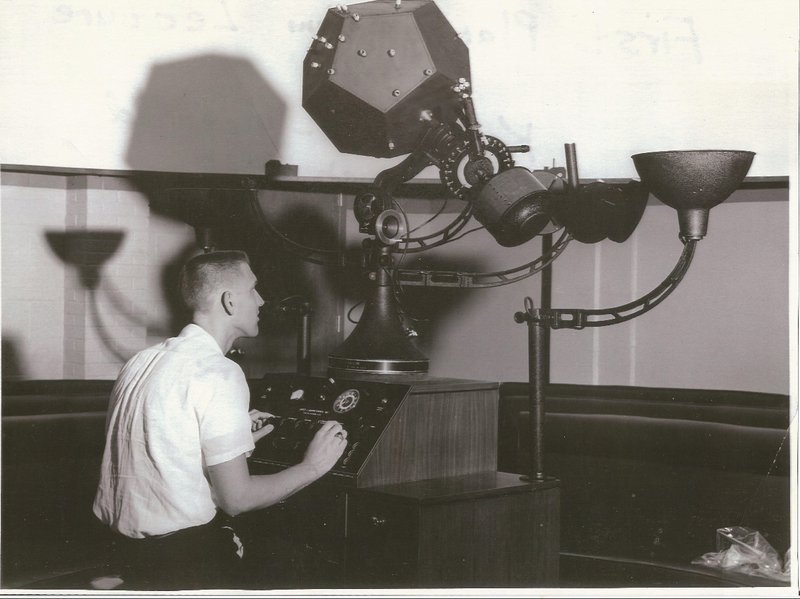About the Planetarium
About the Planetarium
In 1959, Dr. George Downing became the first director and his first student planetarium operator and lecturer was Kenneth Ohm. Ken is seated beside the newly installed Spitz A-2 Star Projector that was used from 1959-1994.

Ken Ohm operating the new Spitz A-2 Star Projector in the newly opened planetarium in 1959. Three rings of continuous bench seating, covered in red vinyl, encircled the operator and machine. The planetarium is located in the sub-basement of Cram Science Hall. Image courtesy of Kenneth.
Resources and References
https://science.nasa.gov/mission/webb/
https://www.nasa.gov/humans-in-space/artemis/
https://science.nasa.gov/mission/europa-clipper/
The planetarium offers educational outreach and serves as a teaching facility for various university courses, as well as local school districts and the community. The theatre seats 34 under a 24-foot projection screen dome. A Spitz 512 star projector was installed in 1996 and the entire facility was renovated in 2014, including the addition of hemispherical mirror projection to provide full dome audio video programming. In 2019, an LED lamp was installed inside the Spitz star ball which replaced the older arc-lamp illumination technology. The LED lamp is a huge asset that will provide extended use through 2059. In 2023, new carpeting was installed in the planetarium and the all-dome digital projector was upgraded with a laser illumination system providing extended use and digital media interaction. Digital encoders and motors were also added to the Spitz projector which helped presenters move away from operating the projector with knobs and buttons. Now presenters can remotely operate the star ball projector from anywhere within the theatre and engage with audience members via an iPad. In 2024, NASA grant money through the Kansas Space Grant Consortium helped fund the acquisition of new all-dome programs. A listing of these shows can be found on the Peterson Planetarium Shows page.
Peterson Planetarium: Six Decades of Informal Science
Journey through 60 years of the planetarium's history.
